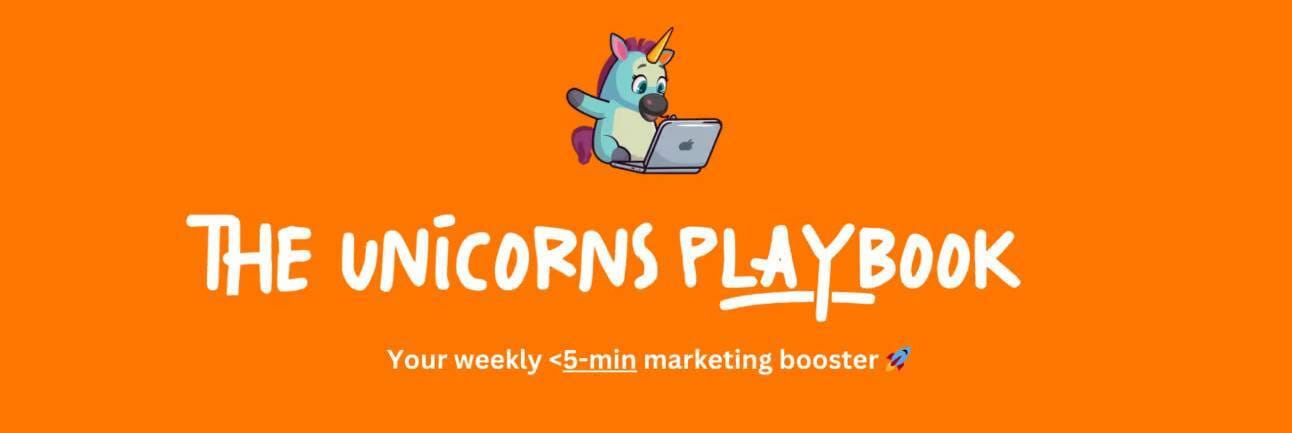- The Unicorns Playbook
- Posts
- 🦄 The Low Budget Growth Strategy Everyone Will Use in 2025 & Quiz Answer
🦄 The Low Budget Growth Strategy Everyone Will Use in 2025 & Quiz Answer
Smart Marketing in 5 minutes!

Smart Marketing in 5 minutes!
Hey unicorns! 👋
This week, we're diving into the growth strategy that's turning $2-3K marketing budgets into scalable revenue engines: Micro-Influencer Marketing.
It's how Lemlist built their entire growth engine without traditional ads.
And yes, you can replicate this playbook today with just $500.
Plus, we'll reveal the answer to Thursday's brain teaser: If a micro-influencer campaign's conversion rate drops suddenly, which metrics should you check first? (Only 15% got this right 😈)
Let's get to it!
Sponsored By PodPitch
Get Booked on 3.8 Million Podcasts Automatically
Stop wasting time – 2025 is going by fast. If you finally want to be a regular podcast guest in your industry, PodPitch.com will make it happen. Even the beehiiv team uses it!
Imagine snapping your fingers & getting booked on the exact podcasts your customers are already listening to…
With PodPitch.com, it takes 60 secs to start emailing tons of podcast hosts to pitch YOU as the perfect next guest.
Sync your email address
Load in your brand info
Click "go"
Now, you've just automated thousands of personalized emails pitching YOU as the PERFECT next podcast guest. Sit back and relax as you watch the emails send out from your email address.
Big brands like Feastables, Jack Links, and hundreds more are already using PodPitch.com instead of expensive PR agencies.
PodPitch.com is so confident in their tech that they'll give you a FREE Starbucks gift card if PodPitch.com isn't the most impressive 20 minute demo you've ever seen.
Ready to make 2025 your year?
Weekly Growth Strategy
🦄 Micro-Influencer Growth: The Data-Driven Way to Scale Trust

What is it?
Micro-influencer growth is the strategy of partnering with creators to promote your product.
But instead of paying huge sums for macro-influencers, you work with niche creators (5-50K followers) who have genuine influence in your specific market.
Why it works?
Micro-influencer marketing works because their audiences actually convert:
4.5% engagement (vs 1.7% for macro-influencers)
$250-1000 per deal (vs $10,000+ for bigger names)
80% targeted audience match
Trackable ROI on every dollar
Real Growth Example
🦄 Lemlist ($2B+ in creator earnings)
Lemlist grew by arming LinkedIn micro-influencers with free accounts and revenue share deals.
These creators built entire workshops around the product, turning their small but engaged audiences into paying customers - all at a fraction of traditional marketing costs.
How to use it:
Find creators: 3%+ engagement rate
Structure deals: $250-500 + 15-20% revenue share
Track metrics: CPA, trial conversion, retention
Initial test: $2-3K across 3-5 creators
The Growth Loop
Brain Teaser Answer
📝 Answer to Last Week’s Quiz
PopStack, a food delivery app, noticed an interesting trend: When customers discover their "secret menu" feature by accident (hidden behind a specific swipe gesture), they spend 40% more on their next three orders compared to customers who were directly told about it. However, only 5% of users currently find this feature. As Head of Product Growth, what's your best move?
The winner?
✅ Create subtle hints in the UI that encourage discovery
Here's a detailed explanation of why this is the optimal solution:
Preserves the Discovery Effect
The data shows users spend 40% more when they discover the feature themselves
This psychological effect would be lost if you directly announced it (email blast) or made it obvious (prominent button)
Solves the Access Problem
Currently only 5% of users find the feature
Subtle hints will increase this number without destroying the discovery element
Examples of subtle hints could include:
Playful loading screen tips
Slight UI animations suggesting swipeable areas
Easter egg-style clues in the app's interface
Why Other Options Would Fail:
Send an email blast: Would kill the discovery effect completely
Add a prominent button: Eliminates the "secret" aspect that drives higher spending
Remove the feature: Throws away a proven 40% spending increase
Real-World Parallel This is similar to how apps like TikTok gradually reveal features through subtle UI hints, or how video games use subtle environmental cues to guide players without explicit instructions.
The key learning here is that maintaining the psychological reward of discovery while improving accessibility creates the optimal balance for user engagement and business results.
Stay tuned for next Thursday's brain teaser! 🧠
Tell us, how did this email land for you? |

